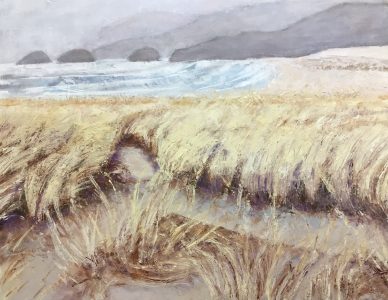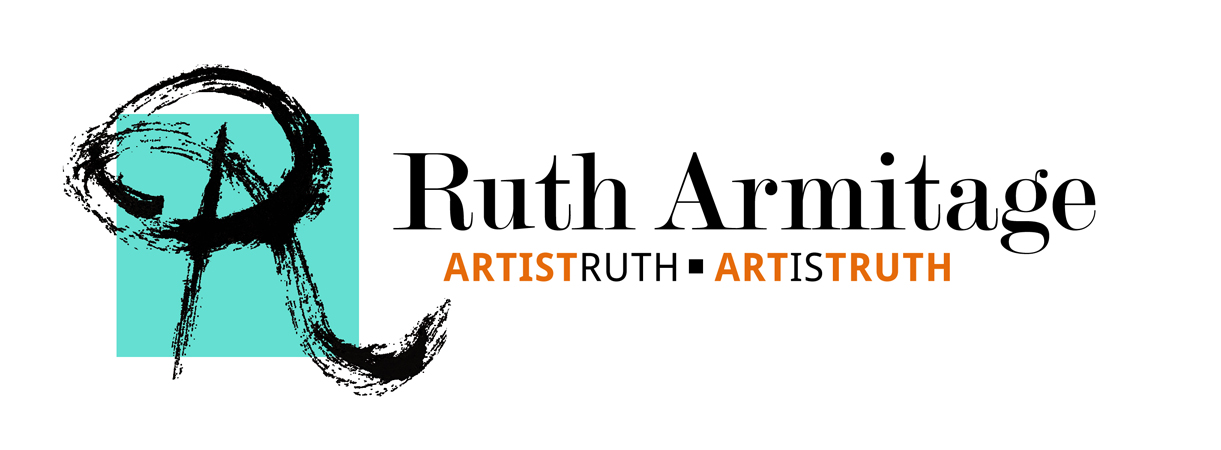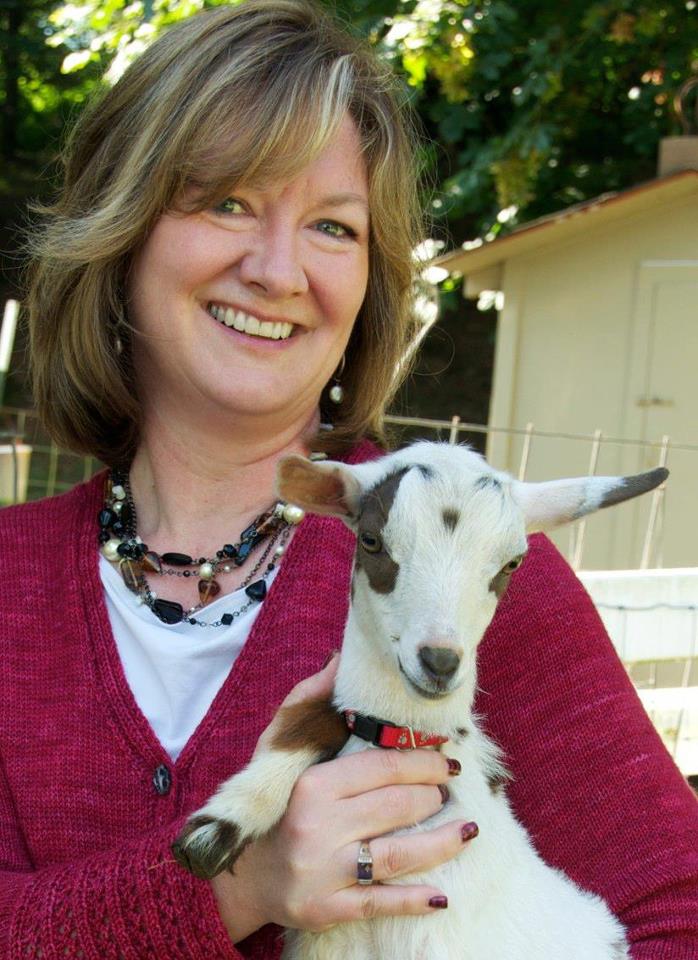Most people get it wrong when thinking about art. They think that What you paint and How you paint it is all there is. They miss one key component. The Why.
In painting classes, I often hear questions like ‘How do you _______?’ Fill in the blank. How do you paint trees?
Use the google machine to do an image search for tree paintings, and you’ll find a million different versions, from Gustav Klimt to Emily Carr to Joan Mitchell. What is missing, is why would you paint trees? Being clear on WHY we are painting a subject always leads to more successful paintings. It helps us abbreviate or winnow out the unimportant information.
A Prime Example
My student, Paula, made a painting this past month that was a great example of this principle. She showed the group a delicate landscape of a misty beach and distant headlands. She subtly described the water, grasses and sand with repeated line and the headlands marched back in space in gradual shifts of color. The atmosphere was subdued and graceful.
The painting had a few small technical flaws, but the emotion in the work was overpowering. It stopped you in your tracks. After I pointed out a few ways to make the path recede instead of stopping abruptly, the artist talked about her process.

“Arriving at the Path’s End” 16×20” Oil on Panel ©Paula Fontanini
She had made several studies from a photograph, taken on a day she learned a dear friend, her cousing, had died of Pancreatic Cancer – gone too soon.
Suddenly, I felt that the abruptly ending path was just right. The WHY of her painting was clear and the wistful feeling I’d had when first viewing it was understandable now. I regretted making any suggestions, but she was secure enough to try out my ideas and decide to discard the ones that didn’t seem to fit.
Why people get it wrong
Our best work is undertaken when we understand WHY we want to tackle a subject. What feeling is motivating us? Sadness? Fear? Awe? HOW can we best express that? Sometimes letting our subconscious make those decisions is best. The artist said she saw the suddenly ending path and decided it was appropriate because of her feeling for the subject.
Paula didn’t rush the making of this painting. It wasn’t whipped out in a one hour demonstration. Nor did she create it with step-by-step instructions by a wise teacher showing her exactly how to do it.
There is no useful pattern for an original. Click here to tweet this!
My student realized, she wasn’t painting a beach, she was painting her friend’s passing. She let the piece unfold its meaning to her gradually and described pouring her heart and soul – all her pain – into that work.
This insightful artist experimented with 3 small studies to find ways to express her feelings for the subject. The painting she made satisfied her. Consequently, we could read those feelings in the work. Paula began working on her studies in a workshop way back in July. She finished the work in November. Be patient, Grasshopper!
Paula wrote this on her facebook post: “Ruth, Thank you for you support this year. I have really produced more work just being encouraged by you and your classes and YOUR SUGGESTIONS!!”
If you’re interested in exploring ways to make your work more expressive, take a look at my future workshop offerings! I’d love to work with you.



Hi Ruth! Thank you for the insightful article! And, I love the story behind Paula Fontanini’s painting.
Your title caught my eye because I often do not ask the “why” enough. But, when I do, it usually results in better work.
Again, thanks!
Thanks, Peggy! Yes, it is sometimes difficult to remember to start with Why…. I have it happen myself!